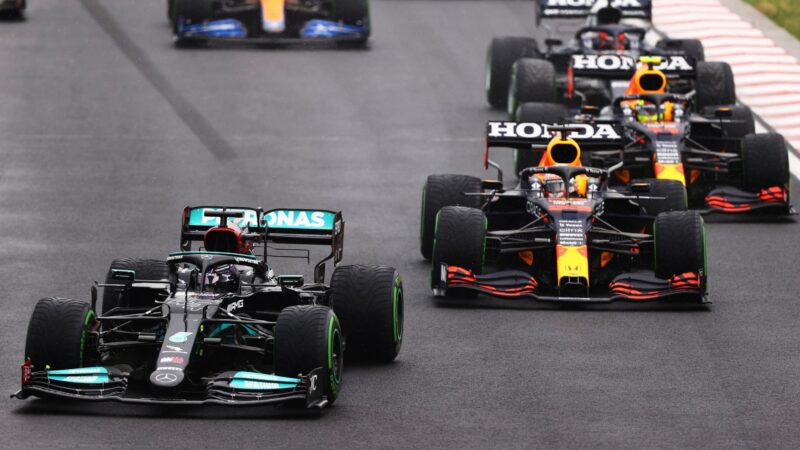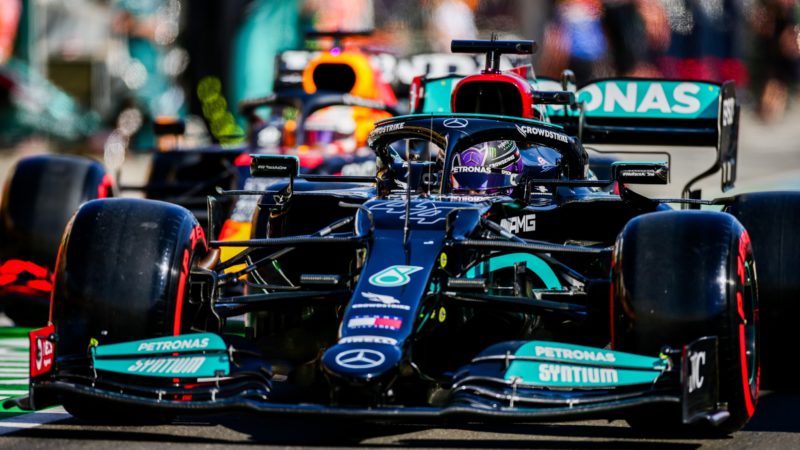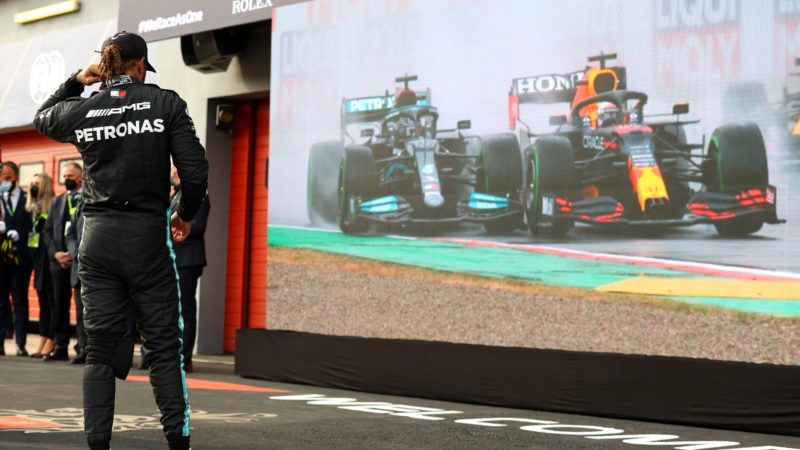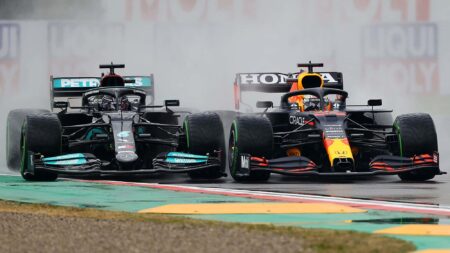Similarly France was won by how much more tyre performance the Red Bull had at the end of its stints, enabling Verstappen to make that mighty in-lap which, in combination with a shaky performance from Merc around the stops, vaulted him to victory. In the two Austrian races the Red Bull – now being heavily developed – was just plain faster everywhere.
Then Silverstone, a track which in its low-drag demands might be expected to favour a low-rake car such as the Mercedes. The Merc – fitted the last of the ’21 upgrades the tunnel programme had delivered – was certainly in much better shape there than in Austria. But the Red Bull still looked marginally quicker – with the exception of Friday qualifying. Red Bull, in looking to protect the vulnerable left-front around Silverstone, did not run the maximum permitted camber. Which caught it out as the track temperatures reduced in qualifying, giving Verstappen an understeer he didn’t encounter at any other time of the weekend. The Sprint – where Verstappen pulled out a comfortable gap on Hamilton and then just maintained it – looked like the real picture. Which, if true, was worrying for Mercedes, as it’s a track well-suited to its traits.
Then the total anomaly of Hungary. We have to take this one out of the reckoning. The Red Bull was miles out of its sweet spot. Something about the circuit’s long-duration medium-speed corners was giving it outrageous degrees of understeer even at full front flap. It was in desperation that they surrendered downforce by switching to a smaller rear wing from Saturday onwards. This was the furthest behind Red Bull had been all season, by an enormous degree. Verstappen qualified 0.4sec behind Hamilton there, having two races earlier qualified 0.3sec in front. Those attributing that swing to the Mercedes upgrade at Silverstone would have you believe the new floor and barge boards brought 0.7sec of raw performance – which, if it has, would stand as possibly the most powerful single upgrade in modern F1 history. No, Hungary was a misnomer. The upgrade for sure will have brought Mercedes something, but nothing like that.

Neither Red Bull could find a balance to knock Hamilton off his Hungarian GP perch before the chaos unfolded
Bryn Lennon/Getty Images
So how is it going to play out next? Spa and Monza stand out as good Mercedes prospects. Zandvoort is an unknown, Sochi will, as ever, be about the tricky front/rear tyre conundrum more than differing aero traits. Suzuka has Red Bull written all over it. Austin it’s not obvious. The high altitude of Mexico always hurts the Mercedes power unit. Then who knows what happens to the calendar?
Picking through all the noise of the data we’ve had so far, trying to find a thread which is consistent with everything we’ve seen is not a simple matter. But I still believe it’s advantage Red Bull in the balance of the season in terms of raw performance – but with many possible complicating factors likely to feed in, not least potential engine penalties. This story is set for many twists and turns yet.




